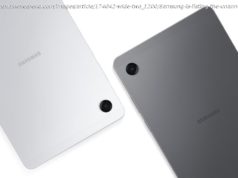A boom in wireless security cameras is inspiring a movement in DIY home surveillance. Follow our buying guide and read our reviews to find the best option for you.
Rent or own, we all want to know our homes are secure while we’ re gone. That used to mean signing on with a professional—and pricey—security service like ADT. But the boom in wireless security cameras is putting home surveillance into our own hands. We haven’t changed our top picks, but you will want to know about the new Nest Cam IQ, which was announced today. We’ll have a hands-on review in the coming weeks.
These close cousins of webcams require minimal installation and offer flexible setups and a range of security features. Indeed, the offers vary widely by camera, and navigating them all gets more daunting as this category grows ever more crowded. To help you find the best security camera for your needs, we’ ve outlined the key features to consider and tested six of the newest, most high-profile models.
Whether you’ re looking for an easy way to check on your kids and pets, or a full-service sentinel to monitor for intruders, we’ ll help find the right product for your needs.
Our favorite home security camera at this time is Samsung’s SmartCam PT. It’s a pan/tilt model with a 96-degree field of view—and that’s before you take into account the camera’s ability to pan its lens 350 degrees and tilt it on a 155-degree arc. This camera can also lock onto a moving body and track it across its field of view.
Samsung includes all the features you’ d expect to find in a top-shelf security camera, including two-way audio, motion and sound alerts, and night vision. There’s also onboard storage in the form of a microSD card slot, so there are no subscription fees to deal with.
The Nest Cam is a terrific choice if you’ re looking for an indoor security camera. Being the successor to the popular Dropcam Pro, the Nest Cam delivers improved video resolution, better sound and motion detection, and it can see better in the dark than the original model.
While you can’ t deploy one outside (at least not without purchasing a weatherized enclosure) , the Nest Cam does include some features you won’ t find in our top pick, including two-way audio, noise detection, and a stand that doesn’ t need to be fastened to a surface. You also won’ t need a PC or an NVR to store the Nest Cam’s video captures, because it uses the cloud for that (with the obvious downside being an ostensibly optional subscription. Without the subscription, you can see only live video from the camera.)
The outdoor security camera space is getting crowded quickly. Nest Labs brings its A game to the space with the Nest Cam Outdoor, a rugged yet stylish camera that doesn’ t scream “you’ re under surveillance!” like many of its competitors. It’s easy to install, with a magnetic mount that doesn’ t need any screws to anchor it, and a USB power cable that can be detached from its AC power adapter, so you can thread it through a hole in your wall if you don’ t have a weatherized power receptacle outside your house.
Netatmo’s outdoor home security camera costs more than most because it does double duty as a porch light (an outdoor LED floodlight, actually) . It connects to your Wi-Fi network, but must be hardwired to your home’s electrical system. This is easy if you’ ll be replacing an existing porch light (provided you don’ t mind doing electrical work) . The absence of subscription fees make the Presence less expensive in the long run, but it does cost quite a bit more up front than competing cameras.
Most home security cameras perform the same basic functions—they detect an event, record the event, and send you an alert—but they don’ t all perform them the same way. And some cameras have special features that go beyond those basics. Here are some common features you’ ll encounter while shopping and why they’ re important (we’ ve listed them in alphabetical order) . In each of the reviews that follow this buyers’ guide, we’ ll discuss how each camera delivers on these features.
Alerts: Home security cameras push notifications to your smartphone when they detect events. Without watching the live feed all day, this is the only way to keep tabs on your home in relative real time. Depending on the camera, it may send text alerts when it detects motion, sound, a face (known or unrecognized) , or all three. Some can send alerts to multiple people, usually anyone else in the household using that product’s app; others will send emails in addition to text messages as a failsafe in the event you can’ t access your mobile device.
Battery backup: Power outages happen, and clever burglars cut electricity before breaking into your home. When that happens, your camera goes dark and, if there’s a crime taking place, you lose all forensic evidence. For this reason, some cameras can also run for a short time on battery power. It’s a feature worth looking for.
Cloud recording: Many manufacturers offer cloud storage plans with their camera. With one of these, your recorded video is sent to a remote server and stored for a predetermined time— usually anywhere from 24 hours to a week—and then deleted to make space for new videos. Though sometimes free, these cloud plans usually require a monthly subscription, but are worth it both for their convenience and if you want a surveillance record during a vacation or other extended time away from home.
Facial recognition: A few newer cameras are experimenting with facial recognition. This feature could more accurately be called “facial identification, ” as in practice it’s much better at distinguishing a face from, say, a lamp, than it is at actually distinguishing between one person’s face from another’s. If you opt for a camera with this feature, know that it typically learns faces through increasing exposure to them, so be prepared to spend a lot of time in front of the lens.
Local storage: Some cameras include memory-card slots in lieu of, or in addition to, cloud storage, so you can store video right on the device. It’s an attractive feature as it can eliminate the cost of monthly storage fees. The downside (if there isn’ t a cloud backup) is that if a crook steals your camera, he takes your forensic evidence with it.
Mobile app: Most of today’s home security camera’s are accessed primarily through a smartphone/tablet app. In addition to offering you a reliable way to view the camera’s live feed, it should offer plenty of options for customizing the way the camera performs. The ability to customize notifications, adjust motion and sound detection sensitivity, and set detection areas are some of the key features to look for. The app should also be intuitive and easy to master.
Motion detection: Assuming you’ re monitoring your home when it’s empty, motion detection is one of the most desirable features in a security camera. Built-in sensors pick up movement within the camera’s field of view and trigger video recording. Because these sensors are sensitive to any movement—event a shift in lighting or leaves blowing outside a window—it’s important the camera system also offer the ability to narrow the range of detection, adjust the sensor’s sensitivity, or otherwise customize this feature to cut down on false alerts.
Night vision: Most break-ins occur after dark, so this feature is nearly as important as motion detection. Technically, most home security cameras support infrared LED illumination, versus true night vision based on image intensification or thermal vision. Be that as it may, some camera’s will switch to night vision automatically in low-light conditions, while others allow you to customize when and how it should be activated.
Pan/Tilt/Swivel: Most security cameras—including all the ones in this guide—can be manually tilted and swiveled to focus on a certain viewing area, but this is a purely set-it-and-forget it feature. A true pan/tilt camera is equipped with a motor so that you can move its lens—or even follow a moving object if you’ re watching a live feed—using its app or browser-based app.






